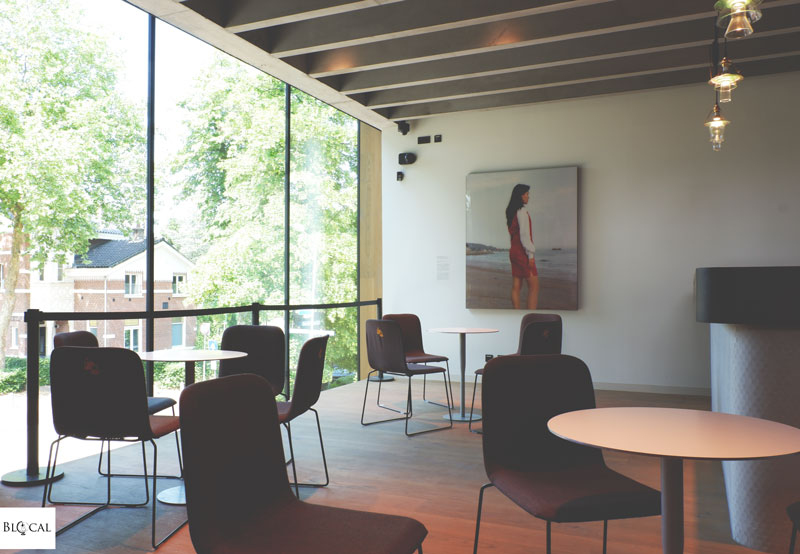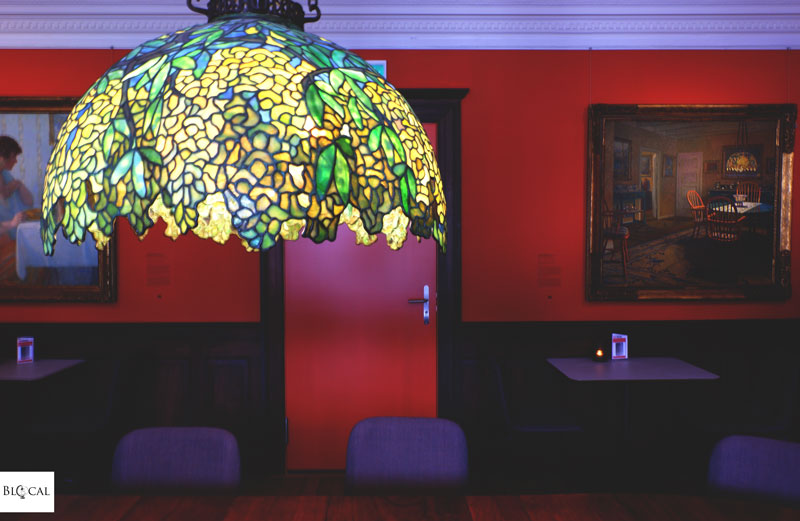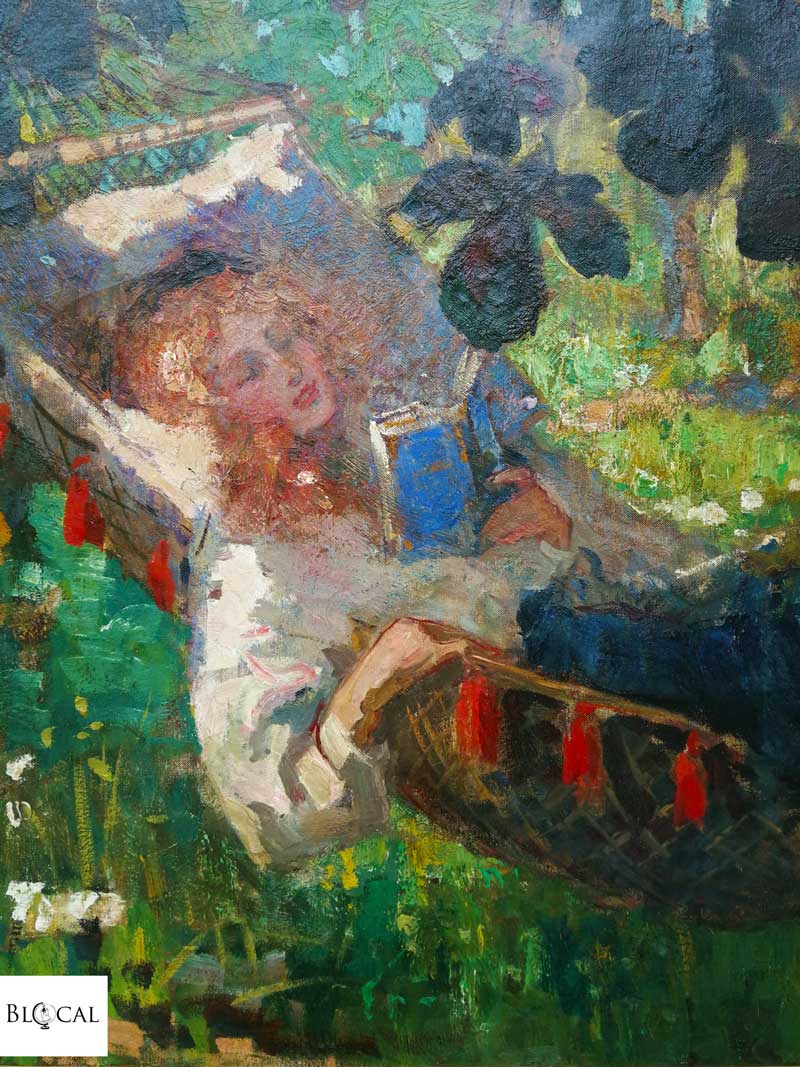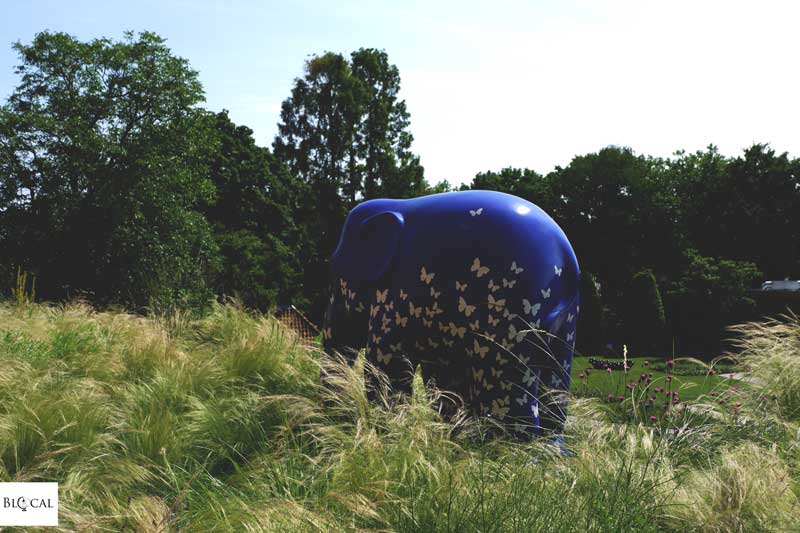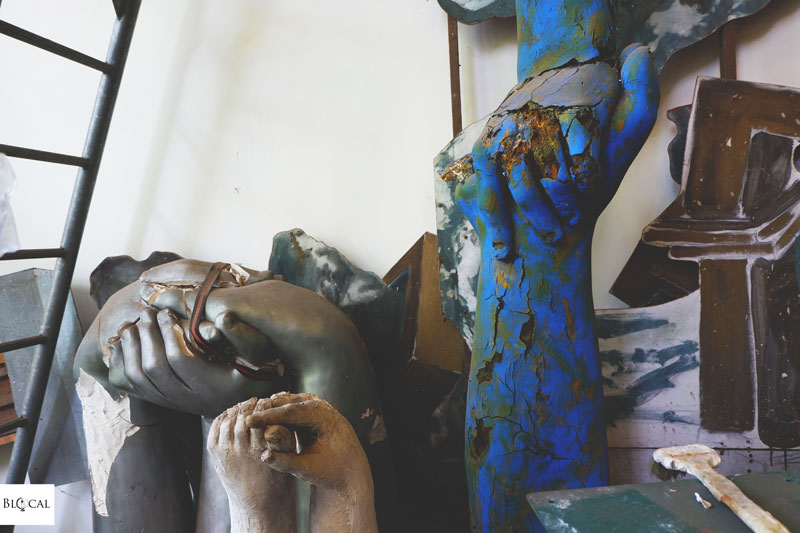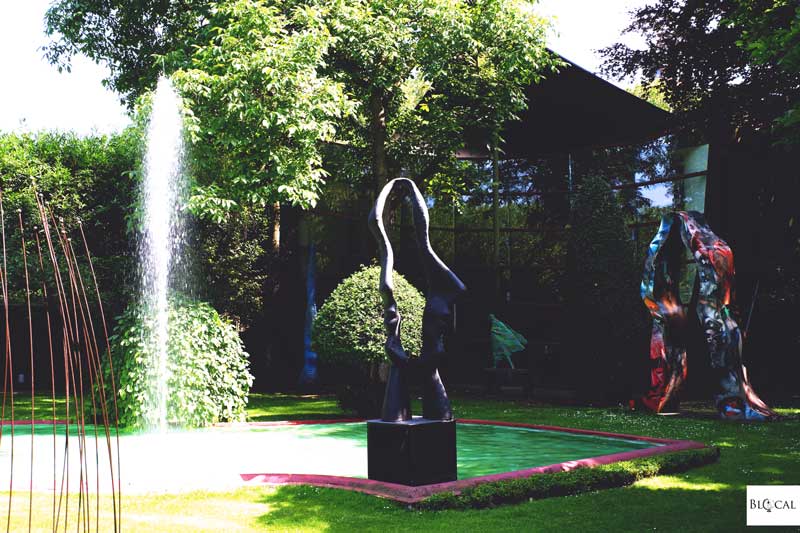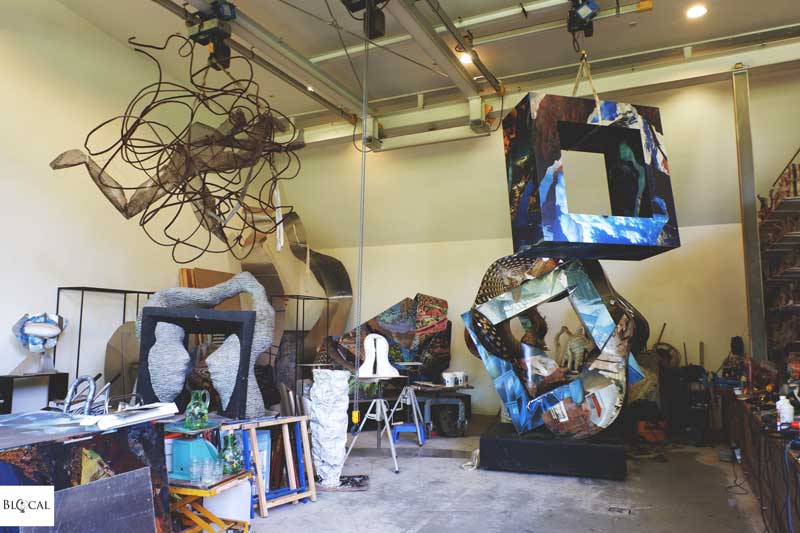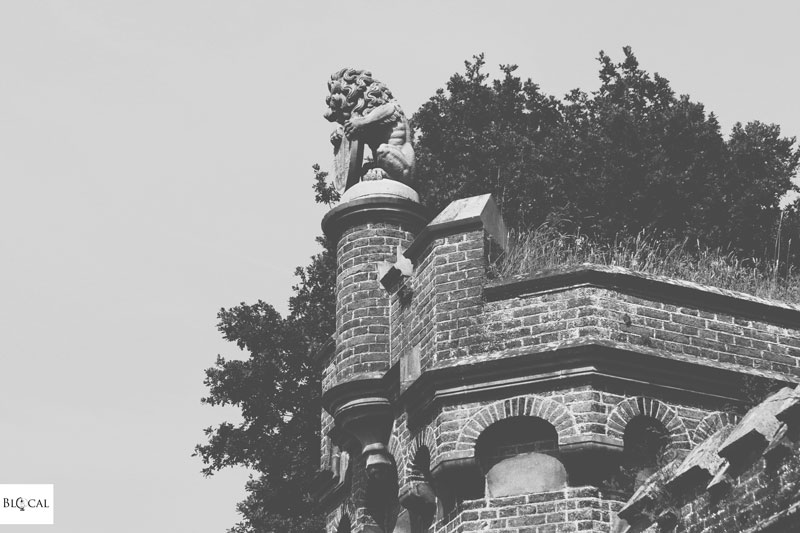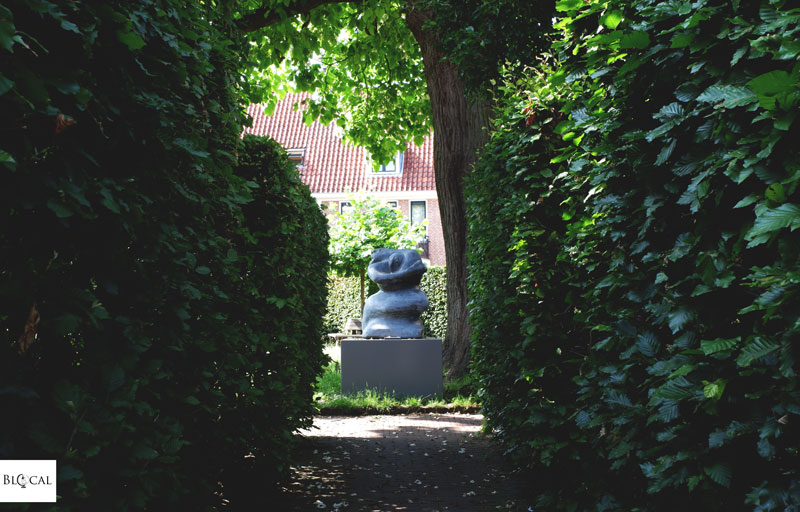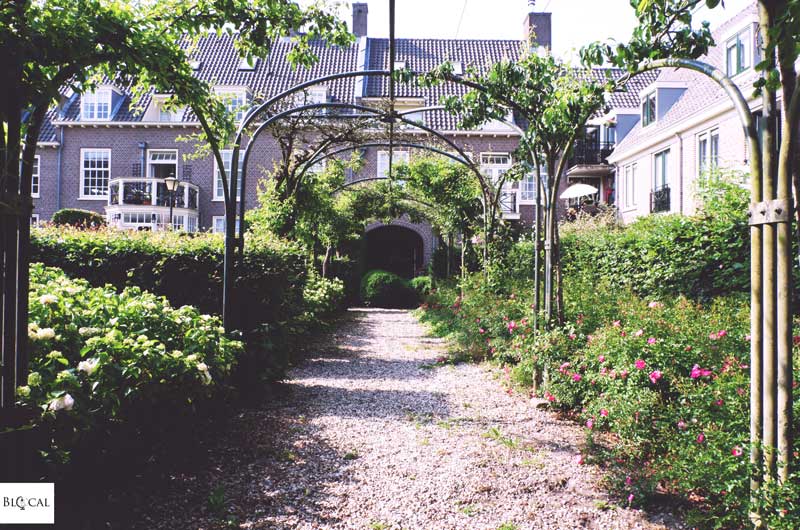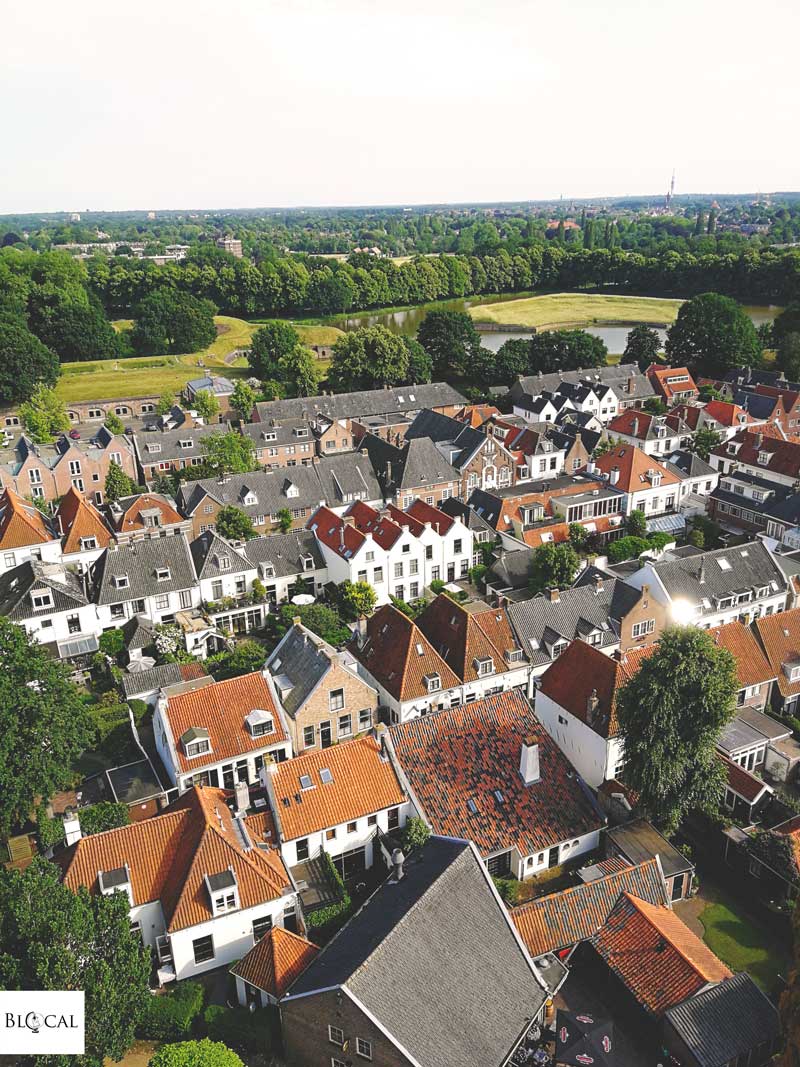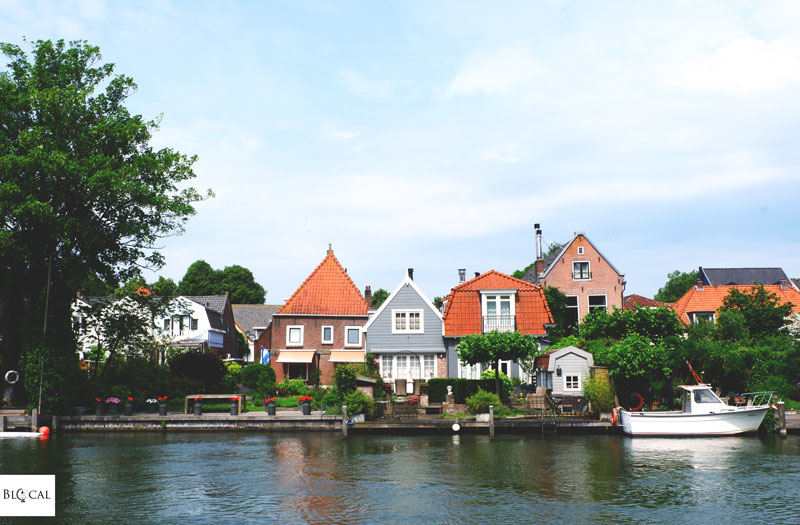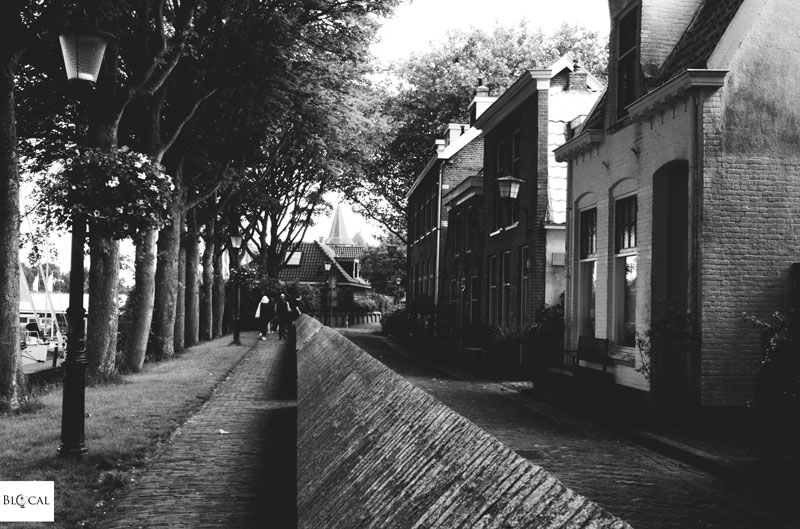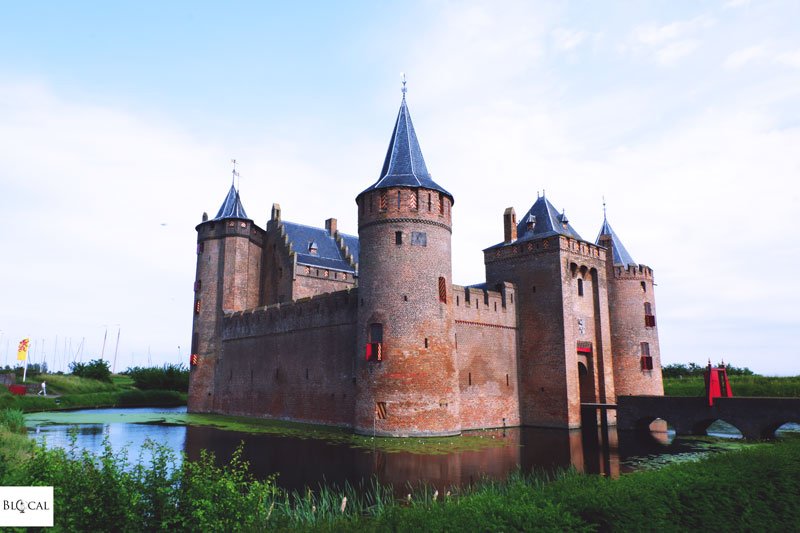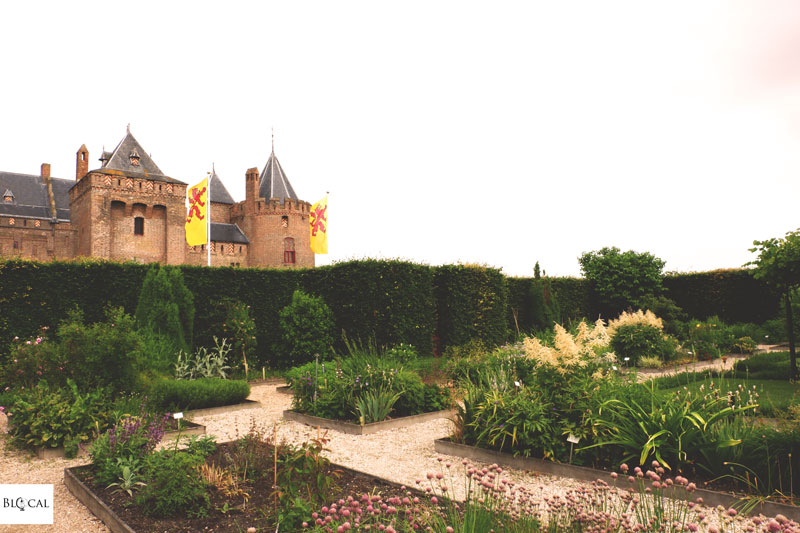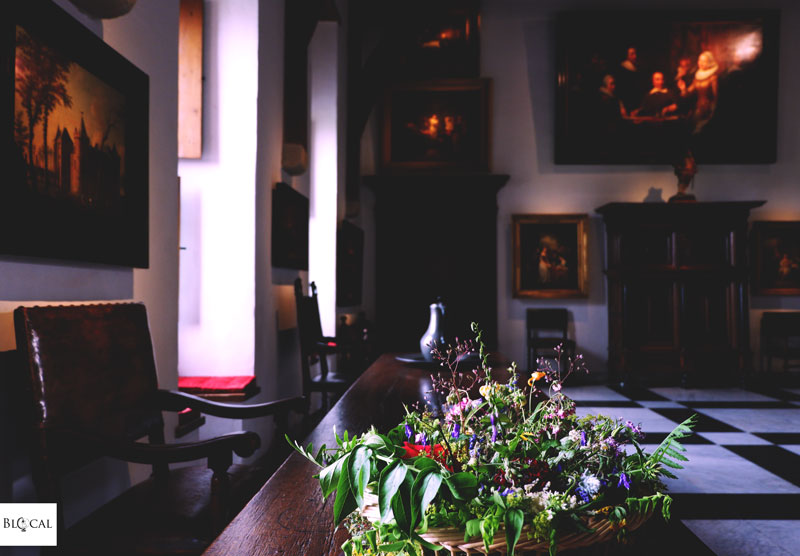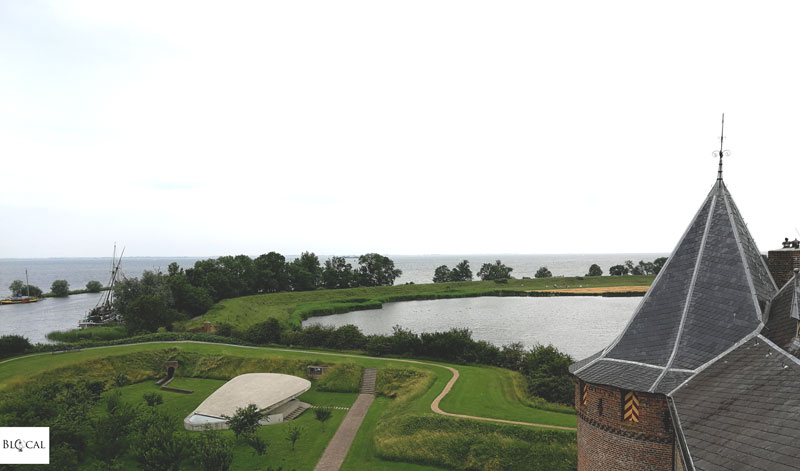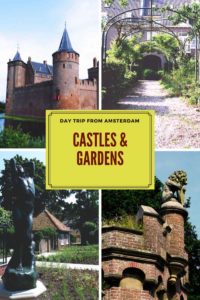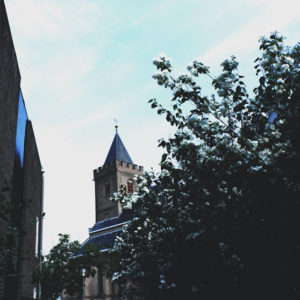
Those fortresses formed a 135-kilometre-long ring of fortifications that have been inscribed in the UNESCO World Heritage list.
The counterpoint to this fascinating glimpse into medieval times has been the modern-time, luxurious wealth of the area, where the Royals sail (on that Saturday morning, Queen Beatrix herself had our same idea of enjoying a day in Muiden), and actors and more rich-and-famous people live.
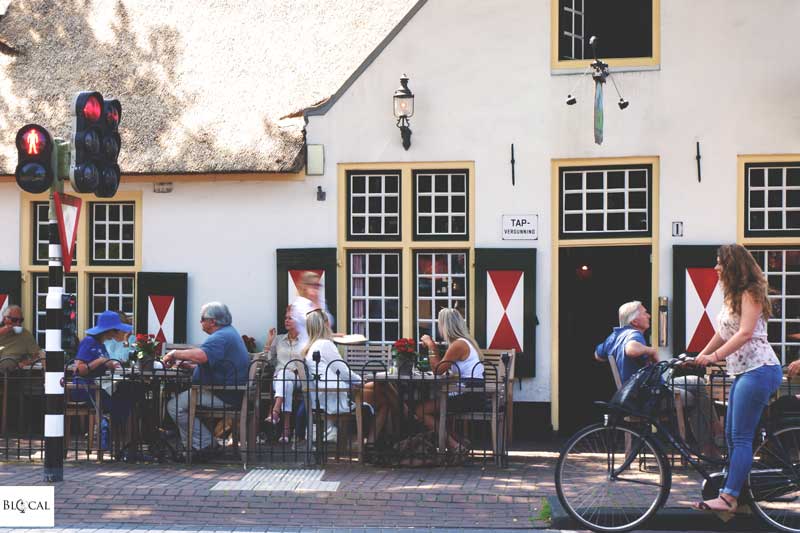
Laren
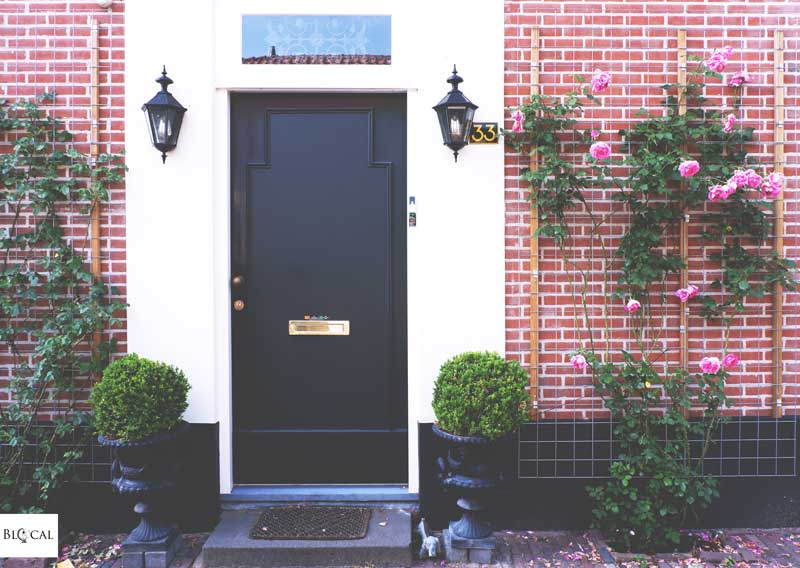
Nardeen
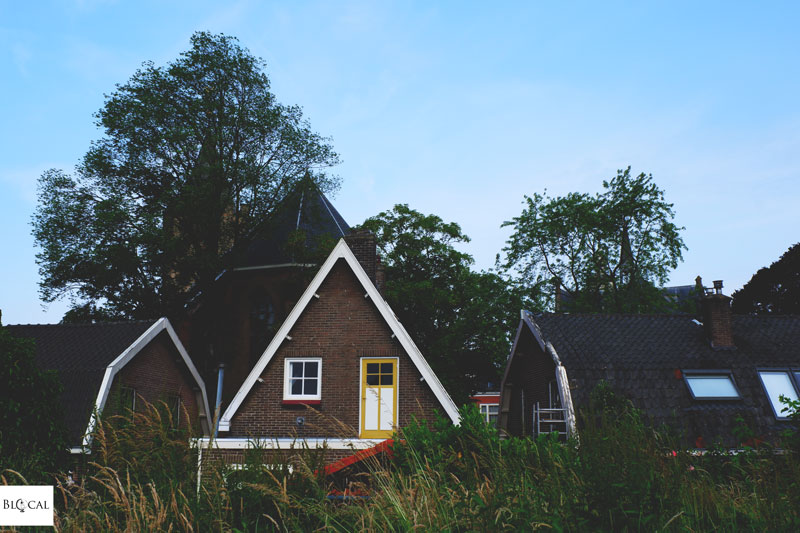
Muiden
All the cities we have visited were quiet, elegant, and postcard-pretty, with cute brick houses covered in scented flowers and cobblestone streets shining in the sunshine.
Day Trip from Amsterdam > The Singer Museum in Laren
Our first stop was the Singer Laren Museum, where we were welcomed by the director, Mr. Jan Rudolph de Lorm, who gave us a tour of this unique cultural heritage site made up of a museum, a theatre, a villa, and a sculpture garden.
Mr. Rudolph told us that back in the early 20th century, Laren was an artist’s colony, inhabited by painters who came from all over Europe, and even America. William Singer himself, the painter who was living inside this beautiful mansion-turned-museum, came from Pittsburg and settled in Laren after falling in love with its unspoiled nature. William Singer’s paintings are on display in the cafeteria of the museum, a setup that empowers them with the homey feeling of literally being in the living room of his house.
We visited the on-going exhibition “Geschilderde Tuinen” (“Painted Gardens”), which shows impressionistic works by Claude Monet and Evert Pieters, but it also includes artists such as Pyke Koch, Charley Toorop, Gustave de Smet, Emil Nolde, Henri le Sidaner, Herman Kruyder, and KeesMaks, all painters who were inspired by gardens.
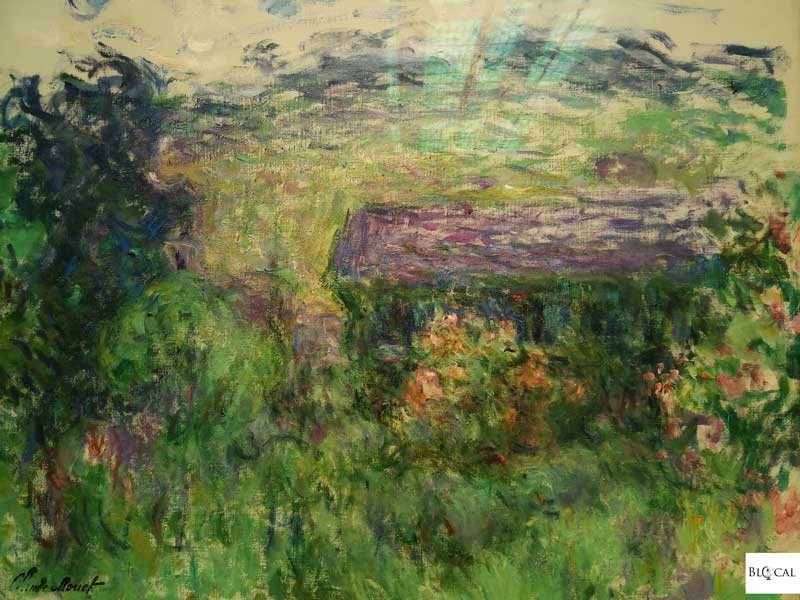
Claude Monet at the Singer Karen Museum
With a fine selection of garden paintings by Dutch, Belgian, and French painters from around the 1900s, this exhibition celebrates the reopening of the Singer Sculpture garden designed by Piet Oudolf, the renowned garden and landscape architect also known as “the Rembrandt of the Garden.”
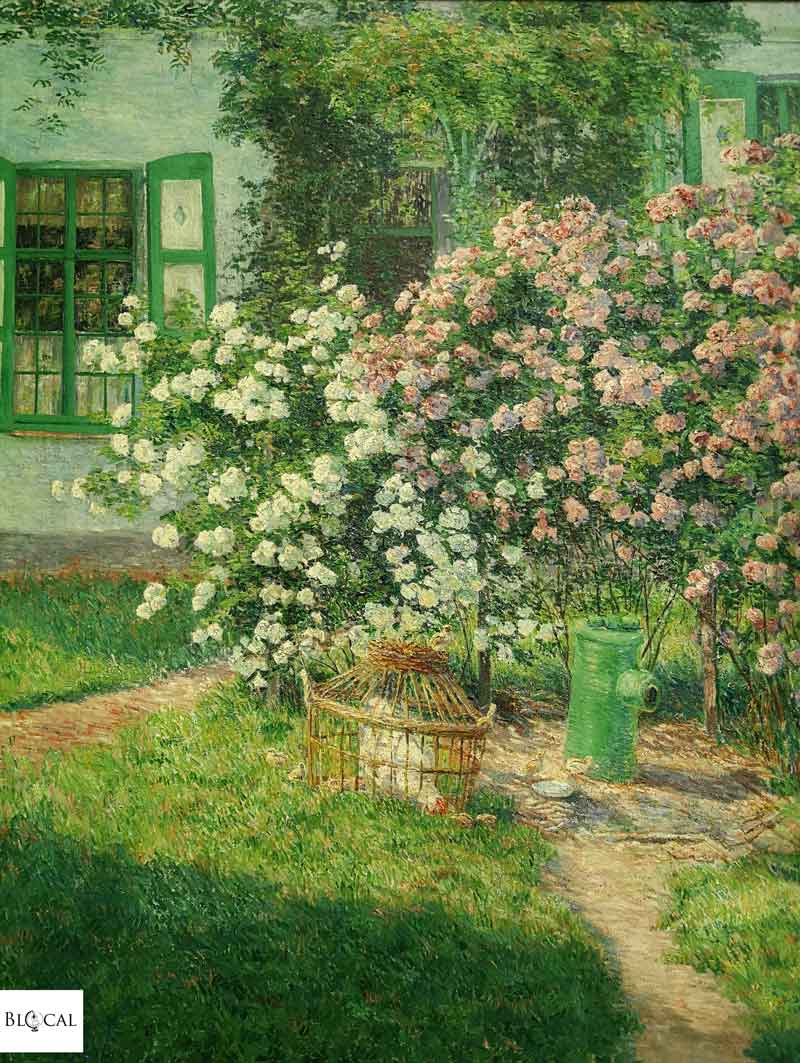
Mr. Rudolph was amused by the fact that Piet Oudolf is a painter who uses the earth as his canvas and colors his composition with flowering perennials, shrubs, and trees. The plants are his palette. Piet Oudolf is one of the principal exponents of the Dutch Wave, a movement in Dutch gardening culture that is distinguished by its use of perennials and its play with the seasons, and so the picture created by his beautiful combinations of plants changes throughout the year.
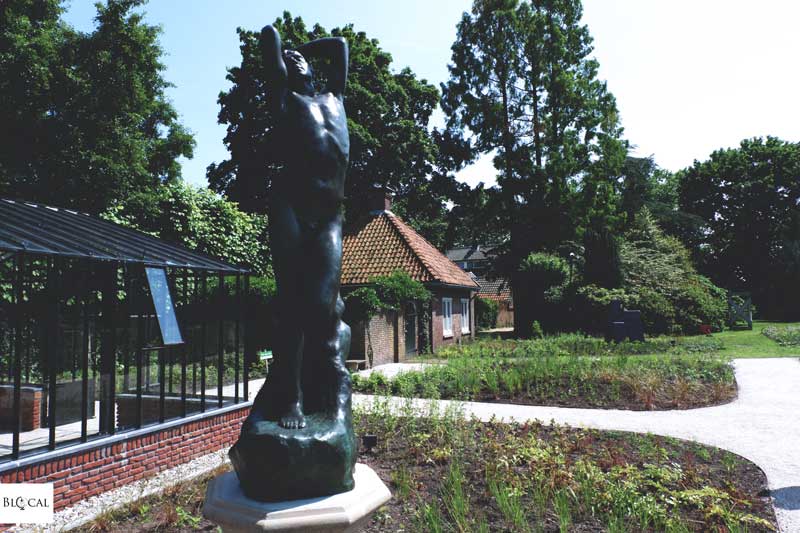
Besides being designed by such an important landscape architect, the Singer Laren Museum’s Garden is also a sculpture garden, with art by Guido Geelen, Judith Pfaeltzer, Bert Frijns, Maria Roosen, Caspar Berger, and Famke van Wijk.
Sunny, neat, and with every little detail taken care of, the sculpture garden was my favourite part of the museum.
Day Trip from Amsterdam > Pépé Gregoire’s Atelier in Laren
The picturesque village of Laren is still home to some artists. We visited the studio of the Dutch sculptor Pépé Gregoire, who welcomed us in his beautiful mansion, and where we learned about the contrasts and the boundless experiments of his art.
His iconic “Photoscultures” (uniquely designed stylized sculptures, furnished with a skin of photographic fragments like a kaleidoscopic collage) were scattered all around the scenic fountain in the midst of his garden.
Scattered inside his atelier, there were the different materials he uses (bronze, aluminium, and more) and all sorts of weird objects and photos that inspire him.
Things were laid about his atelier randomly but, much like the apparently arbitrary juxtaposition of images in the photo collages that made him famous, the final effect is more than the sum of its parts.
Day Trip from Amsterdam > The Fortified City of Naarden
Naarden is one of the best-preserved fortified cities in Europe. It’s shaped like a six pointed star and is protected by six huge bastions.
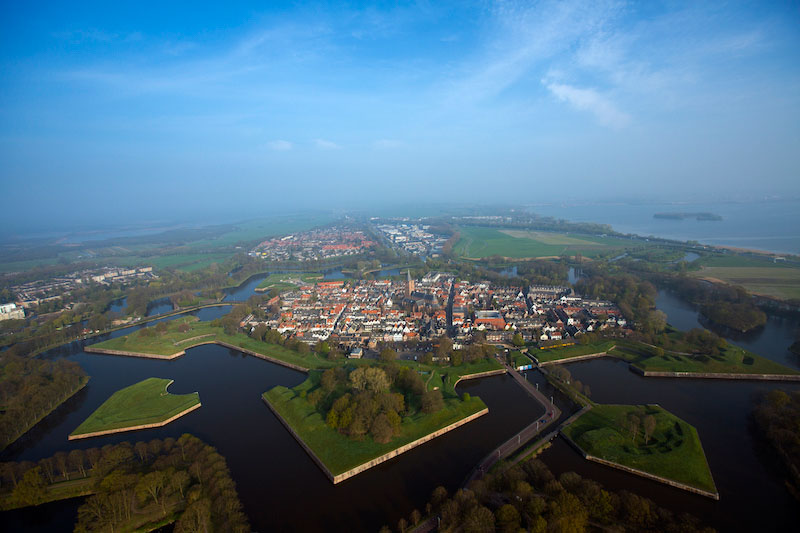
photo: Cris Toala Olivares
It was the strongest fortress in Europe: Napoleonic troops managed to withstand a sixth-month siege (1813-1814), and the fortress was so impressive that it discouraged a German attack during WW1.
But Naarden is also an elegant city made up of winding, cobbled streets (which are laid out southwest/northeast, so that the prevailing southwest wind would dispel the stench from the town), cute brick houses covered with scented flowers, and hidden gardens where to rest in the shade.
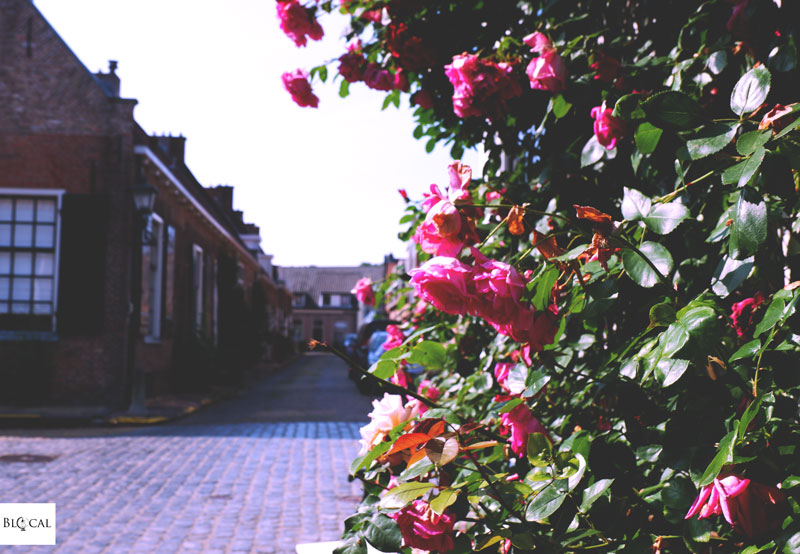
The best view over the city is from the tower of the Grote Kerk: it was worth every single stone step of the 245 we had to climb to reach the top!
Day Trip from Amsterdam > Muiden and its UNESCO-listed castle
The fortified town of Muiden dates back to the 10th century, and it is as elegant and quiet as the other cities we visited in the Gooi and Vecht region.
https://www.instagram.com/p/Bjy7619lnz7/?taken-by=giulia_blocal_blog
We strolled along a picturesque harbor, where the characteristic “botters” (an old Dutch type of fishing boat) were bobbing about and the locals were having a coffee on the sunny terraces along the water’s edge, watching all the people in their boats pass by.
Muiden was once part of an important trade route, and later a strategically important military town used to protect the wealth of Amsterdam, thanks to the oldest and most famous castle of the Netherlands: the Muiderslot.
Built in a time when “wealth” meant bricks (“brick rich” is an expression in Dutch to indicate an extremely rich person), this medieval castle has a beautiful historical 17th-century garden, which is reminiscent of the Dutch Renaissance.
The castle is well preserved, almost frozen at a time of feasting on the long oak tables, its glory shown in the family portraits hung on the walls next to crossed swords and coat of arms, and long cold nights spent gathering around the cozy hearth.
We wandered around the Muiderslot Castle as its lords, ladies, peasants, and knights did; climbing the towers and descending the tight spiral staircase into the dungeon.
We walked through steeply twisted spiral staircases, massive wooden doors, great halls for feasts and, after more stone steps, we were back at the central open-air courtyard, where history blew in the soft breeze, making me think about how fleeting time is, how soon the present becomes the past, and how the seemingly important things in life becomes irrelevant.
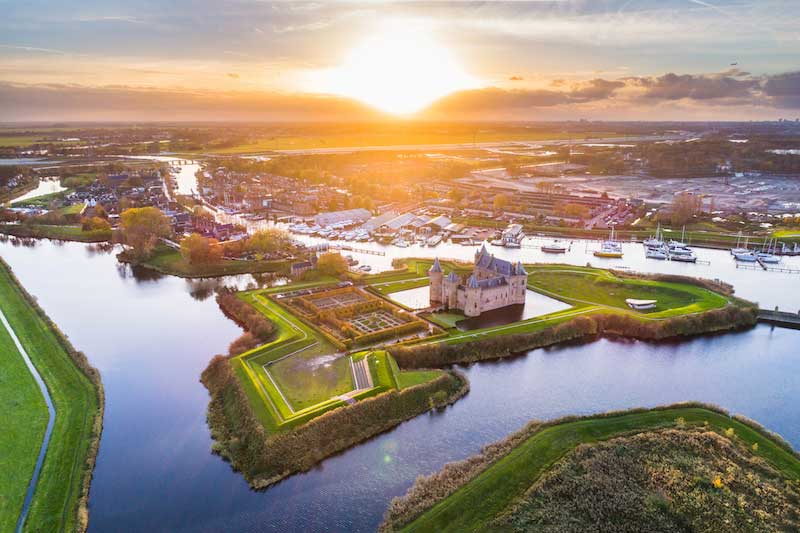
photo: Vanuit de Lucht
Disclaimer: I discovered the Gooi and Vecht area as part of a press trip organized by Amsterdam Marketing. However -and as always- all the opinions expressed here are my own.
You can hover over this (or any image) to quickly pin it!
